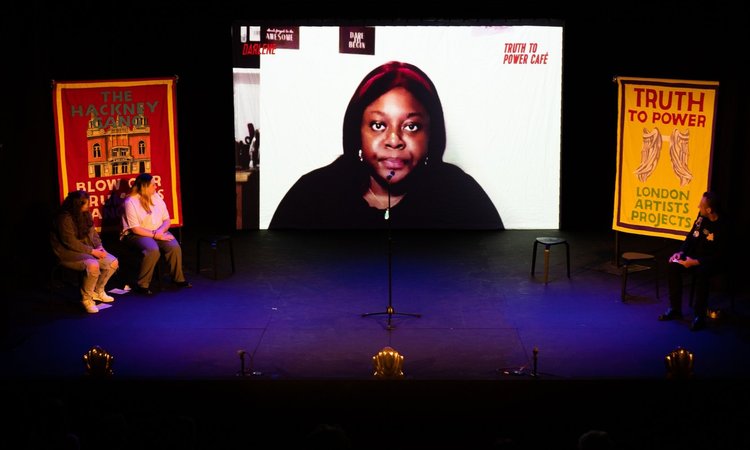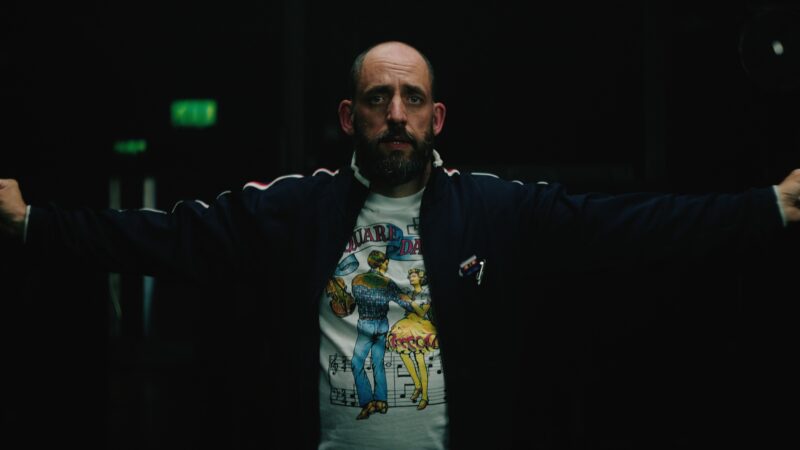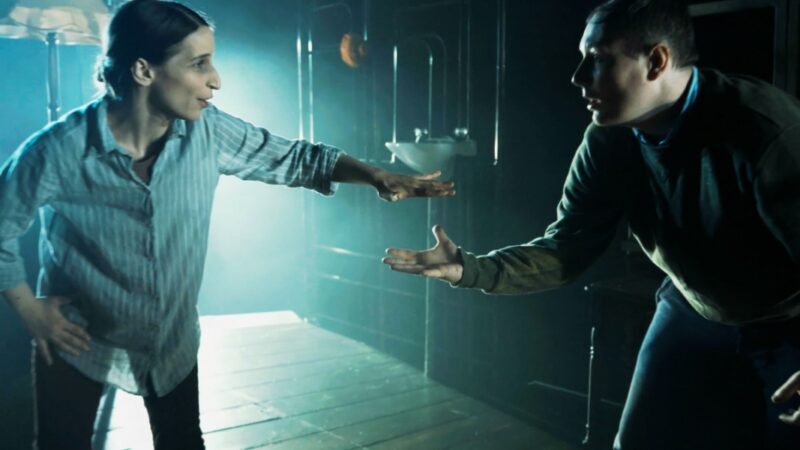Introduction
Long read – 18 minutes
In early 2023 The Space convened an Accessibility Working Group with activists, artists and industry professionals who are all committed to improving digital access to the arts.
Together, we started to build a picture of the current obstacles, industry needs and radical possibilities of an accessible cultural sector. See our companion piece ‘Digital Accessibility: It’s time for a cultural shift’ for an explanation of what we mean by ‘digital accessibility’ and an overview of the cultural shift we believe is necessary to make the arts more accessible digitally.
Two of the most pressing issues raised at the sessions were the lack of consistent information about what best practice in digital accessibility looks like and the lack of a central pool of knowledge that can be shared across cultural sector practitioners, organisations, funders and Disabled-led activist groups. In this document we seek to address this inconsistency by pulling together best practice guidelines and documents from existing sources and from the invaluable contributions of our Working Group members.
We hope these notes, which follow the rough chronological process of designing and delivering a digital arts project, can act as a source of knowledge that will drive and support your creative work to be as accessible as possible.
Please note that in this document we will use the umbrella term Disabled to refer to people who identify as Deaf, Disabled or Neurodivergent.
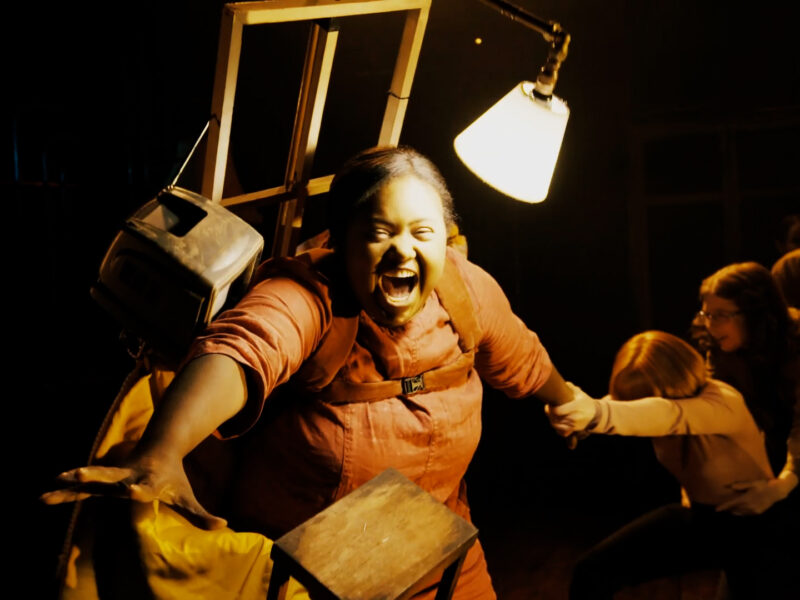
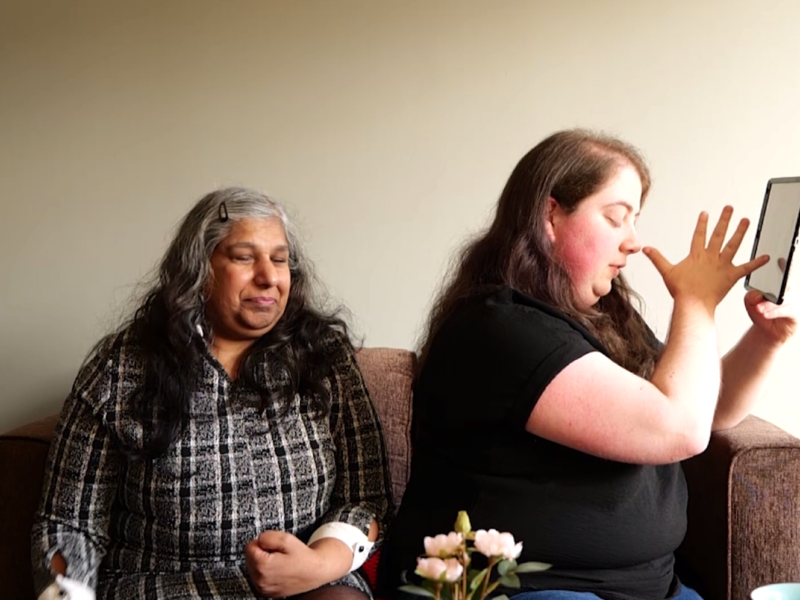
Best Practice Guide
Strategy and organisational development
Disabled organisations are currently leading the way in advocating for accessibility but they cannot sustain the momentum or manage it at the scale required. There is widespread ‘disability burnout’ and arts organisations must take responsibility for making their work accessible.
Here, we offer four key ways in which this shift can be achieved, which are elaborated on below:
- Create a long-term digital inclusion plan
- Identify barriers to access
- Make accessibility everyone’s responsibility
- Employ and consult Disabled people
1. Embed digital accessibility into long-term planning and strategy
Real, sustained progress towards digital accessibility requires not only a strong will and intention to change but an ongoing commitment to it. Developing a clear action plan or strategy around inclusion that includes digital accessibility will help you stay on course, measure your progress and feel proud of tangible changes you’ve made. Zoe Partington advises that an effective plan should:
- Be meaningful to your organisation and its local context: There is no single, right way to plan how to improve digital accessibility. A large museum in London will have very different challenges and resources from a small theatre group.
- Be developed in collaboration with Disabled people and digital access consultants: ensure the building blocks for good practice are in place by working with a Disabled expert.
- Be focused to maximise impact: focus on areas where you know there are particular accessibility challenges and where your actions can add significant value.
- Be practical and manageable: be ambitious about what you want to achieve, but don’t set yourself up to fail by writing objectives that you know you can never meet. Try setting SMART objectives – objectives that are specific, measurable, actionable, realistic and time-based.
- Be part of your organisation’s wider work: having a plan for digital accessibility will give your work a specific focus, but it also needs to be embedded into the mainstream of how your organisation thinks and works.
There is no ‘one size fits all’ plan, as every organisation has different needs, resources and existing cultures, but the following documents will help you create your own strategy to embed accessibility in a meaningful, lasting way:
- Bristol & Bath Creative R&D’s Inclusion Framework for Change is an excellent starting point for building your own strategy.
- ACE’s Let’s Create is an example of a big vision with concrete delivery steps, and one that weaves inclusion into its framework.
- Creative Scotland Equalities, Diversity and Inclusion Action Plans: A toolkit produced to support Creative Scotland’s Regularly Funded Organisations (RFOs) to prepare and produce their Equality, Diversity and Inclusion (EDI) Action Plans.
- Heritage Lottery Fund’s Digital Attitudes and Skills for Heritage(DASH) models how an audit can be a useful starting point for setting goals for the future.
- Scope’s Everday Equality Strategy outlines important principles for the equality of Disabled people.
If your organisation is starting from scratch or working with minimal resources, it’s important to focus on progress, not perfection. The most important thing is to start!
2. Identify barriers to access within your organisation
It is essential to understand how Disabled people are dis-abled. The social model of disability proposes that the lives of Disabled people are limited not by their impairment but by the barriers that are placed in front of them by society. Using this model enables us to identify barriers that Non-Disabled people might not otherwise see – these can range from physical barriers to assumptions about what Disabled people can and can’t do.
Unlimited have created an animation to help communicate how removing barriers can enable otherwise Disabled people, while Inclusion London have produced a factsheet on the social model of disability, including a BSL version.
The best way to identify barriers is by consulting Disabled people with a range of access needs (See point 4, below).
3. Make accessibility everyone’s responsibility
Improving accessibility is often a job allocated to one person, meaning that as soon as that person moves on, all knowledge about accessibility within the organisation is lost. This can lead to ‘organisational amnesia’ which stalls progress. It also means that accessibility can be siloed as a concern, rather than embedded into every aspect of an organisation’s work.
In order to weave accessibility more fully into the fabric of an organisation, all staff should be trained and educated on disability issues, and accessibility made part of their day-to-day responsibilities. There are many Disabled-led organisations, such as Shape Arts, Disability Rights UK and The Diversity Trust, who can offer expert and bespoke training.
Ideally, training should:
- Enable staff to understand the barriers faced by Disabled people, and know what action to take to remove them.
- Build staff confidence to be able to ask questions about a person’s individual access needs – this is essential for creating inclusive experiences.
- Draw on the experience of skilled facilitators and mentors.
4. Employ and consult Deaf, Disabled and Neurodivergent people
Involving Disabled individuals in organisational development and artistic production will lead to better understanding and practices. Crucially, Disabled individuals need to be brought into decision-making roles to ensure that organisational direction is guided by people with experience of social exclusion. It is important that you pay for people’s expertise and time properly even if they are offering their lived experience.
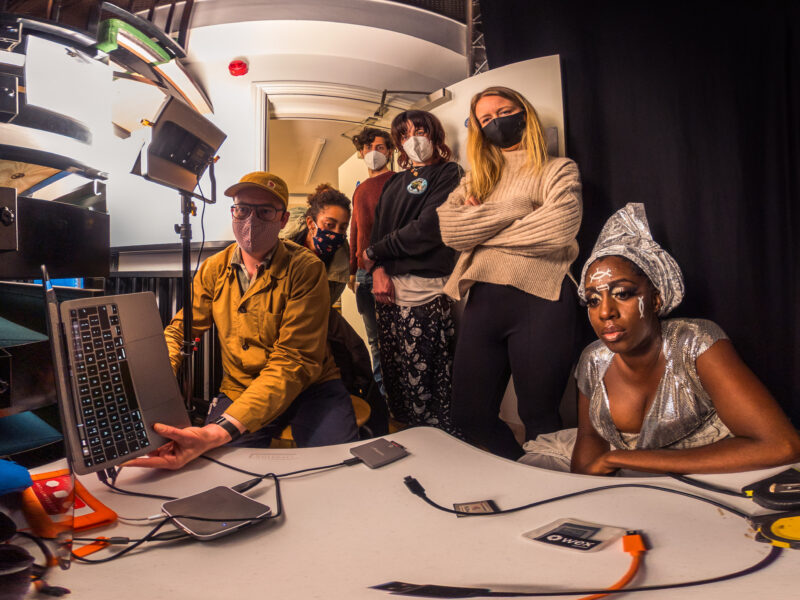
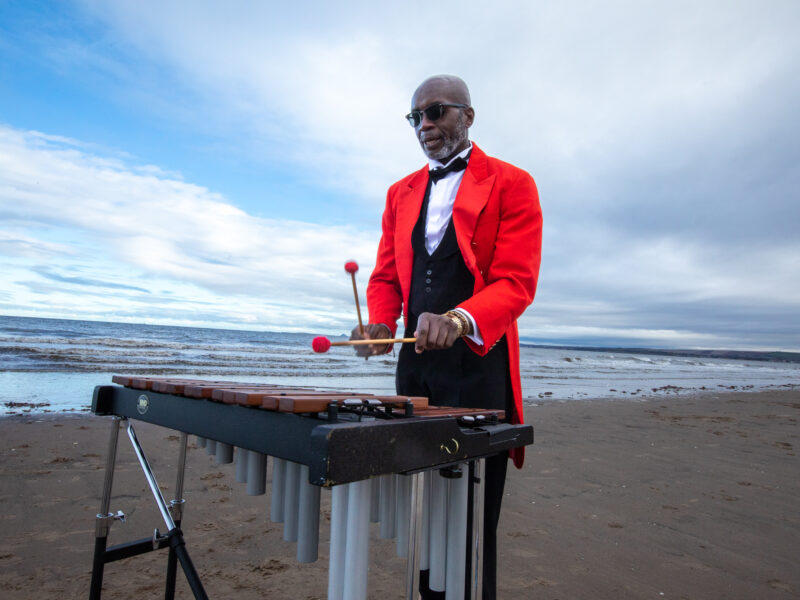
Planning
The planning stages are often the most critical part of a project, where success can hinge on important decision-making around budget allocation, stakeholder engagement and audience research. It’s essential, then, that accessibility is woven into the project at this stage.
In order to plan a accessible project, we recommend:
- Promoting and discussing the value of accessibility in nuanced ways in stakeholder meetings. The value proposition can be wide-ranging, from the moral imperative to make all art accessible to the business case that the more people who can access the production, the more successful it will be. It’s also important to stress that accessibility is a long-term investment – the insights and audience engagement gained from one project can carry over into future work and strategies.
- Related to the above, it’s important to ring fence a budget for accessibility from the start. Create an access budget checklist and know the real cost. If necessary, bring in an Access Consultant to advise you. Not only will this avoid accessibility becoming an afterthought, it will ensure other areas of the project don’t absorb the precious budget needed for accessible design.
- Ensure the artists and collaborators you’re working with are properly represented within the project management team and at board level.
- When commissioning artists and collaborators, ensure the process itself is as accessible as possible. Access riders can be a very useful way to understand the individual access needs of the people you’re working with, ensuring that no one is excluded from your collaborative processes. Unlimited offer a comprehensive guide to creating your own access rider.
- Map out the journey of your project and identify the barriers that could be encountered along the way – both for the audience and the project team. This will enable you to remove barriers early on, put access measures in place, and free up time for you and your collaborators to be creative. Shape Arts offer a useful guide to this process, as well as the importance of communication, in their guide ‘How can I develop an accessible project?’.
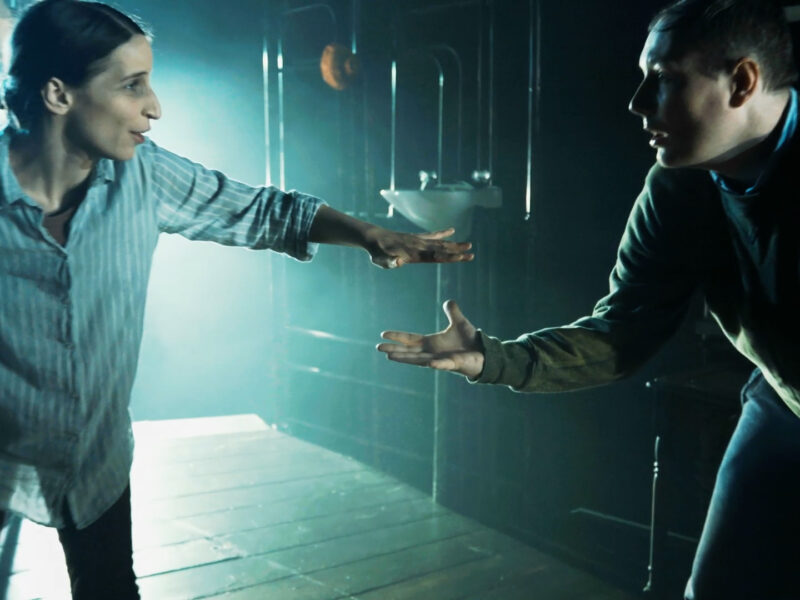
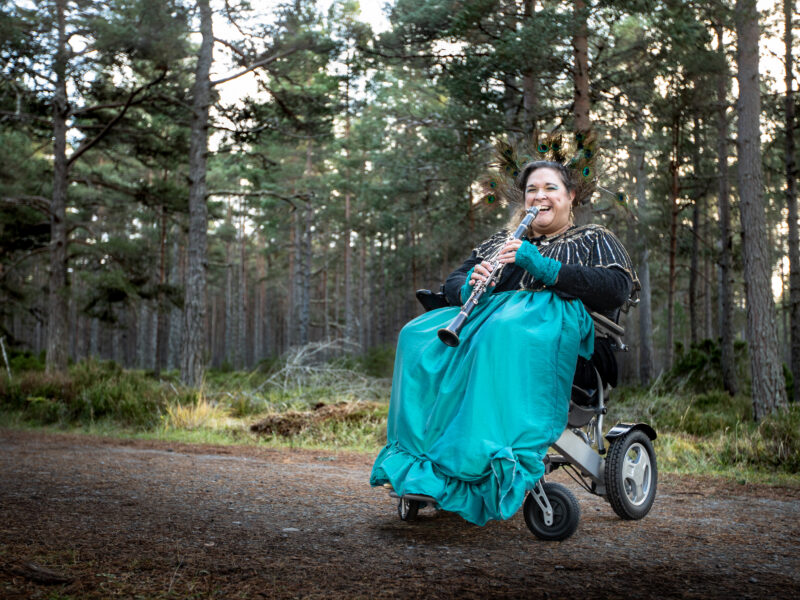
Production
So you’ve planned your project, and it’s full steam ahead for the production. This is the time for meticulous attention to detail to ensure that all aspects of your project are made accessible.
As you’ll see below, there’s a lot to think about in the production stage, so it’s important there’s a well-resourced team in place to support Disabled artists and ensure accessibility standards are met. Ideally, the team should be trained in accessibility or be working with a Disabled facilitator.
You might also find during content production that the software itself present barriers to access due to its functionality being primarily designed for Non-Disabled people, so involving Disabled producers in software development is another important step towards improving digital accessibility.
There are currently no definitive minimum standards for accessibility, but below we list the services and forms of access that would, in an ideal world, be provided for every digital project:
- Accessible websites: the internet has the capacity to remove barriers that many Disabled people experience in the physical world, but websites have to be developed with accessibility in mind to realise this potential.
The World Wide Web Consortium’s (W3C) Web Accessibility Initiative contains a wealth of information relating to web accessibility, including minimum standards, strategies and resources. Inviqa have produced a comprehensive guide to digital content accessibility. We can’t list everything here, but in brief, accessible websites should include the following:
- Text alternatives: written alternatives to non-textual content – also known as ‘alt text’ – enable visually impaired people to access content such images, buttons, graphics and illustrations.
- Alternatives for multimedia: this might include text transcripts, captions and sign language interpretation for audio content, and audio descriptions for visual content. We go into more detail on some of these formats below.
- Adaptability: the ability of content to be enlarged or adapted to meet diverse access needs. This involves marking up content properly so its structure is independent of the way it is presented, which can then be customised.
- Accessible navigation: websites should have clear menus, provide more than one way to find pages, and make all functionality available by keyboard. It is also important to be able to easily close pop-ups.
- Distinguishable content: content should be easy to see and hear. This involves providing sufficient contrast between foreground and background colours, allowing for text and image resizing, and allowing users to pause or adjust background audio. Consider also how to design for colour blindness.
- Sufficient time to read and use content: users should be given enough time to type text, understand instructions, operate controls, and complete other tasks on a website.
- Awareness of content that could cause seizures or physical reactions: ideally all flashing content should be avoided, or a warning provided before it is presented. Mechanisms should be provided to switch off animations.
We recommend consulting a specialist agency, such as Accessible by Design or Hassell Inclusion, to ensure that your website meets accessibility standards.
- Audio description for visual content is an example of the creative possibilities available within accessibility – these highly evocative and descriptive works are often an artform in themselves. If the visual content being presented is an artistic work, the description can often benefit from a close collaboration between the audio describer and the artist, in which the describer is able to find a language that reflects the mood and intentions of the piece.
VocalEyes are one of the foremost providers of audio description, and also offer resources and training.
- Accessible documents: if providing documents as part of your project, they should be accessibly written, clearly presented, and usable by screen reading software. There are guidelines for creating accessible documents for Adobe Acrobat, Microsoft Office, and Google Docs.
The UK Association for Accessible Formats has more guidance on their website, including advice on producing large print documents and easily readable information. See also Inspired Service’s guide on making written information easier to understand for learning Disabled people and the Plain English Campaign for providing clear and concise information.
- Live captioning and British Sign Language (BSL) Interpreters for webinars and online streamed events and productions: See Stagetext’s captioning standards for theatre productions and Equity’s guide to good practice with BSL in the arts.
- Hybrid events: if your organisation produces in-person events, an important part of its digital offer will be the live streaming of those events. CRIPtic Arts has published an excellent guide to producing hybrid events, with a particular focus on doing it with limited resources and limited time. The Scottish Queer International Film Festival (SQIFF) also produced the Deaf and Disabled Accessibility Guide intended for use by film exhibitors of any size who want to embed Disabled access into their programming and across their work, including online screenings and events.
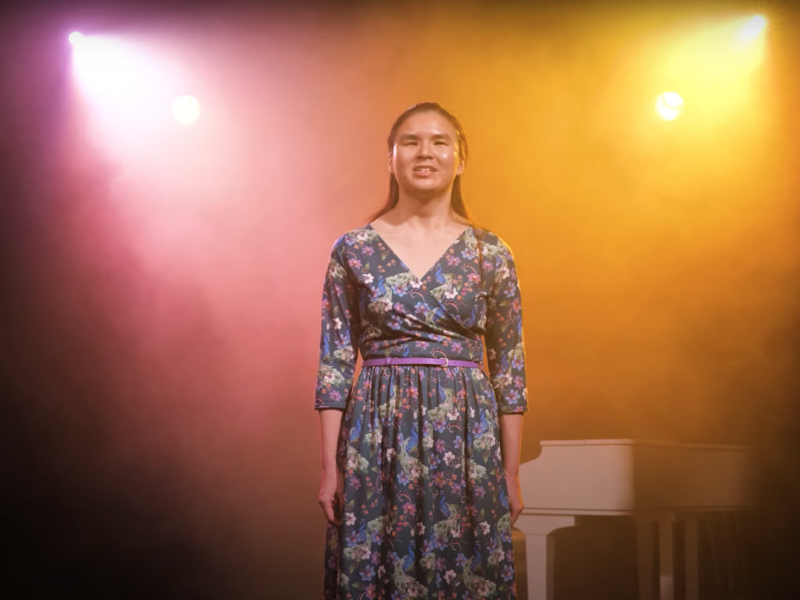
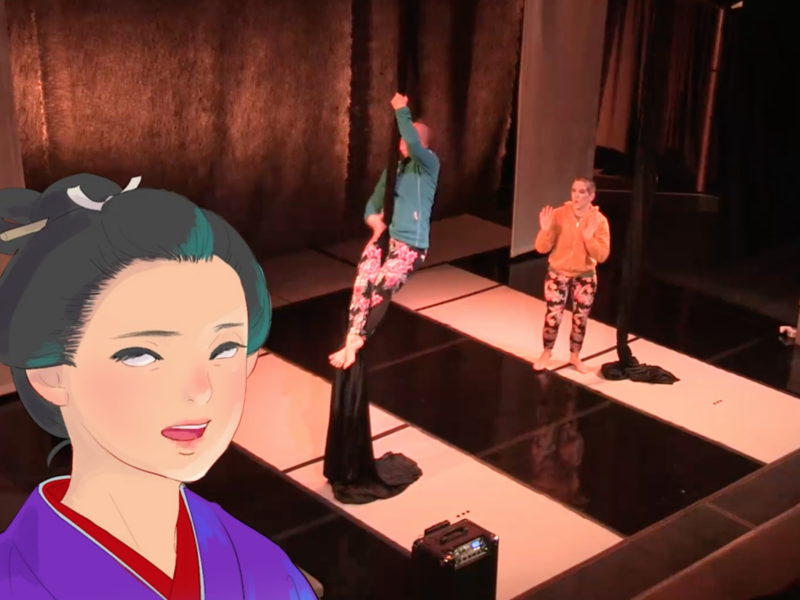
Marketing
Once you’ve created an accessible artwork or website, the next step is to tell people about it.
Here are some of our top tips to make sure Disabled people know how to access your work:
- Seed your work in networks that Disabled people use. If, for instance, you’ve created an audio described work, consider asking VocalEyes to include it in their newsletter. Other leading disability-led organisations include:
You might also consider approaching Disabled individuals to act as ambassadors to Disabled communities.
- Create trailers and marketing materials that are representative of the accessible experience you’ve created. If for instance you’re screening an audio described performance, don’t just make an audio described version of the trailer for Non-Disabled people. Create a separate trailer that gives a taste of what the audio described show actually sounds like.
- Ensure the accessible versions of your work are clearly presented on your website, not hidden away in sub menus and state clearly what each form of access offers.
- Consult Unlimited’s Accessible Marketing Guide.
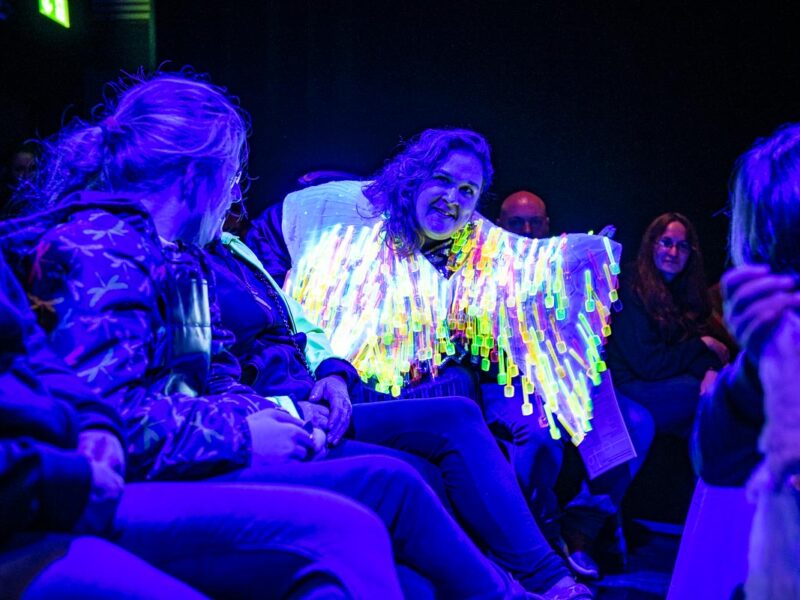
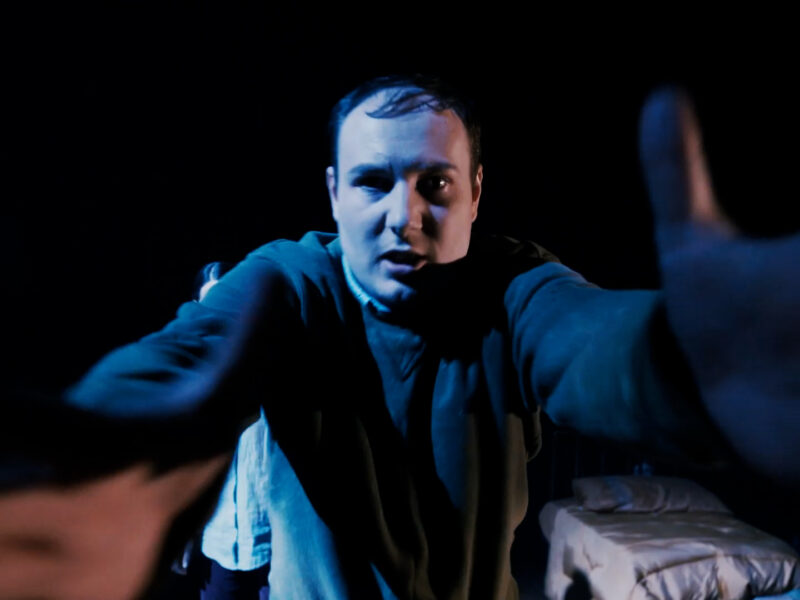
Impact and evaluation
Evaluation is key to implementing changes in a constructive and consistent way and in enabling you to keep up to date with changes in digital technology and the needs of Disabled artists and audiences. Being curious and investigating what works for Disabled people will enable you to make informed decisions and help you and your organisation to create digital experiences that include us all. Don’t be afraid to ask what isn’t working as this is more important than knowing what is working.
The way to manifest changes is to involve Disabled people who have a critical eye and can help you to enact reasonable and forward-thinking solutions that will help you to improve. You can also take the opportunity to share your learnings with peer groups and other organisations who are seeking to create inclusive digital work.
Don’t be put off if viewing figures for accessible content are low to start with – every organisation has to start somewhere, and – as mentioned earlier – it’s important to aim for progress, not perfection.
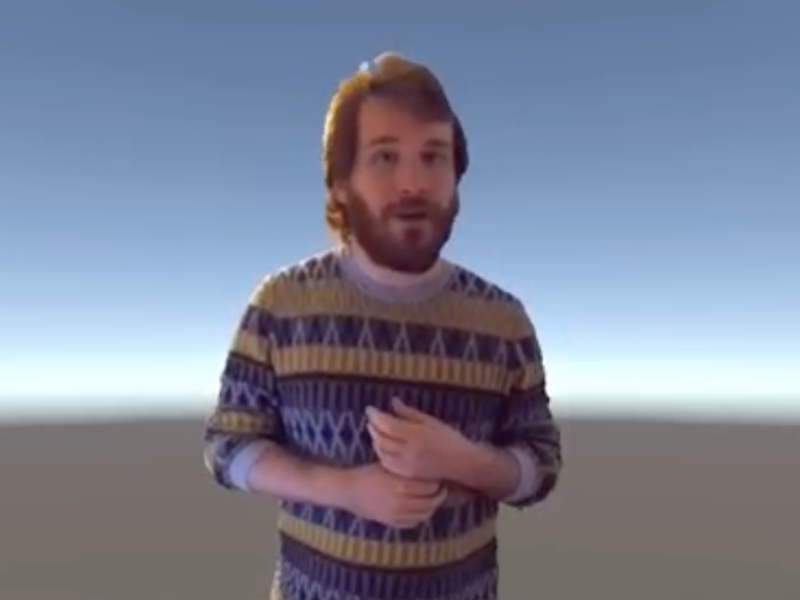
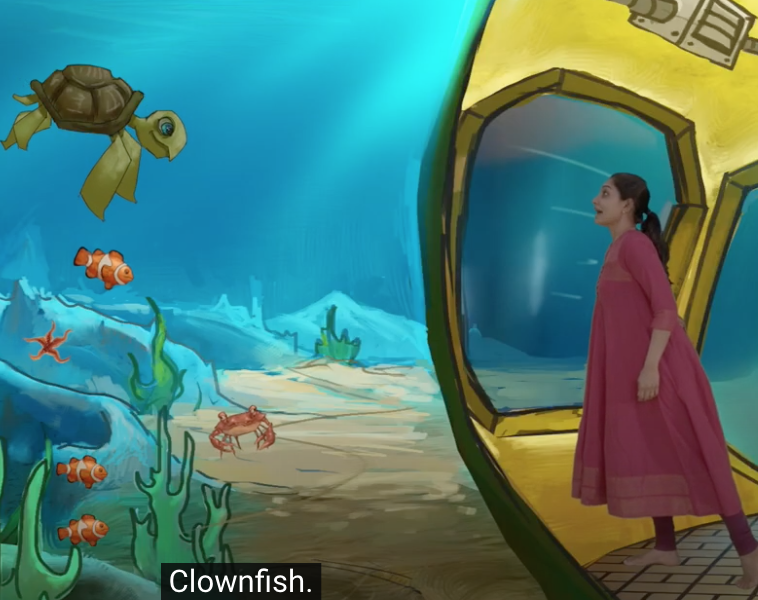
Exemplary accessible digital projects
- Extant, a company of visually impaired artists and theatre practitioners, have produced the multimedia production Digital Flight Paths which combines animation, aerial movement and creative audio description to set a high bar that has been met with critical acclaim.
- My Sound Cinema is the first online site for audio-described screenings of new and existing cinema releases. It was created by media access and translation company Screen Language with support from The Space and other organisations.
- During the pandemic, BBC Arts launched the Culture in Quarantine initiative, in partnernship with Arts Council England, Arts Council of Northern Ireland, Arts Council of Wales and Creative Scotland. The programme brought the arts into people’s home during lockdown, and the second round of commissions in 2021 championed the work of 12 Disabled artists, each of whom were supported by a producer from The Space, in partnership with Unlimited.
- Supported by theatre professionals and Disabled arts organisations, Professor Hannah Thompson from Royal Holloway produced the audio description for a set of films as part of an AHRC Equality, Diversity and Inclusion Engagement Fellowship. Their work consisted of an initial consultation with the filmmakers on accessible filmmaking, followed by the production of the AD.
- Everywhere and Nowhere is a collaboration between the National Trust and the University of Leicester’s Research Centre for Museums and Galleries that explores histories of disability from across the Trust. This pioneering film spotlights 10 fascinating stories, objects and sites with connections to histories of disability from the Trust’s buildings and landscapes, and collections and historical records. To find out more about this collaborative research project visit the project website.
- Katharina Husemann and Zoe Partington developed the website for the Layers of Vision exhibition, which was designed with accessibility and inclusivity in mind.
- Natasha Trotman created the digital interactive 360 immersive video installation Neuro-Mnemonic during the pandemic. The film addresses intersecting complexities with various communities, contending with human loss and pain and interwoven with golden threads of hope. She has also created the film (Non) Normative Imaginaries and (Im) Materialities (NNIM) for Somerset House, focused on disability justice.
- Poet Lisa Fannen collaborated with Alison Smith and Monika Smekot to produce the film Affirmation #6, a BSL performance poem translation of Lisa’s poems Affirmation #6 and Ambulance. It was made a month before lockdown and includes an all-female team and four different nationalities: Scottish, English, Latvian and Bosnian.
- Perspectives is a disability-led short docudrama set against a harmony of sounds, featuring audio description and captions. Made by Collective Perspectives, the film features Lim Lee Lee, Stephanie Esther Fam and Victor Tan telling stories about their experiences of living with disability. It showcases members of the Harmony Community Choir.
- Now & Next, a talent development scheme run by LUX Scotland in partnership with BBC Arts, Screen Scotland and LUX Scotland, presented online screenings of work by emerging creative voices. Artists were supported by a range of mentors and given access support including creative captioning and audio description workshops. ‘Cosmic Domestic’ by Victoria Adams (cinema version) features creative captioning animation by animator Daniel Hughes.
List of contributors
This resource arose out of conversations with the following people, all of whom attended and contributed to The Space’s Accessibility Working Group in 2023:
-
Ceri Barrow, Plus Tate Coordinator, National Partnerships, Tate
Roberta Beatie, Tech Champion for Digital Accessibility, Digital Culture Network
Samuel Brewer, Arts and Communities Lead, CRIPtic Arts.
Rachel Broomhead, Content Writer and Researcher, The Space
Harmeet Chagger-Khan, Head of Innovation, The Space
Lynn Cox, Artist, Audio Describer & Access Specialist Disability Inclusion Consultant, Arts Coaching Training
Marina Elvira, Digital Programme Manager, VocalEyes
Josie Fraser, Head of Digital Policy, National Lottery Heritage Fund
Jamie Hale, Artistic Director of CRIPtic Arts and Independent Freelancer and Consultant
Alice Hargreaves, Founder, Sick in the City CIC (SIC)
Dr Katharina C. Husemann, Senior Lecturer in Marketing, King’s Business School
Cathy Mager, Freelance Curator and Artist
Simon McKeown, Professor of Art, Teesside University
Andrew Miller, UK Arts Access Champion and creative consultant
Fiona Morris, CEO, The Space
Aidan Moseby, Artist/Curator/Access consultant
Zoe Partington, Access Consultant
Tanya Raabe-Webber, Freelance Artist, Consultant/Trainer/Mentor
Lara Ratnaraja, Independent Cultural Consultant
Jeff Rowlings, Head of Programme, Shape Arts
Jhinuck Sarkar, Illustrator, Educator & Creative Access Consultant
Fiona Slater, Head of Access & Equity, Science Musuem Group and Independent Consultant
Alison Smith aka Pesky People, Independent Arts / Access Consultant / Access Coordinator
Anna Starkey, Freelance Writer, Curator, Producer
Natasha Trotman, Equalities Designer, Researcher, Independent Consultant
Jamie Wright, Associate, The Space
How useful was this resource?

